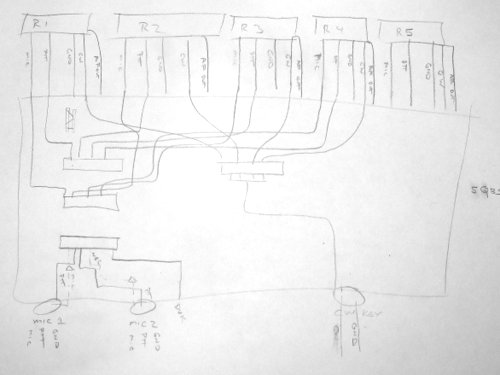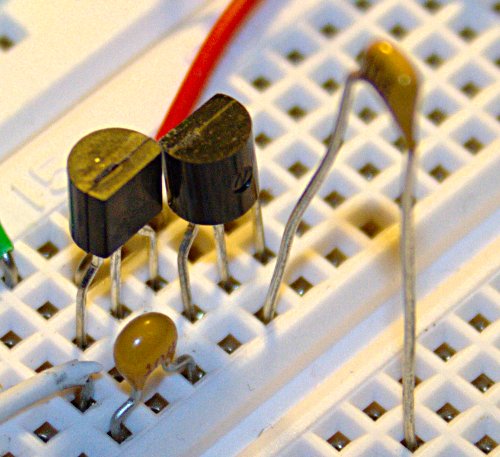QSOs for Sunday
In theory I am working the Sunday portion of the VHF contest. It is so quiet that even my voice keyer is tired. I spent more time on the phone today than I did making QSOs. (There are a few Q's today but it is pretty slow.) I started drawing out ideas for another radio project.

The picture is ugly and from my camera phone but that is not really what matters.
I am thinking of building a control box with the following features:
I think that we have a large Aurora event on the way, shortly after the VHF contest ends, go-figure.
73 de NG0R


The picture is ugly and from my camera phone but that is not really what matters.
I am thinking of building a control box with the following features:
- All for the selection of two different microphone connections (useful during a family station event or with two different types of mics like a headset/boom or headset/handmic)
- Select 1 of 4 radios as the target for the microphone and AF signals
- Select 1 of 4 radios as the target of the CW keyer source
- OPAMPs for the microphone signal going to each radio (each radio can have adjustable mic levels)
- OPAMPs for each microphone input
- Built voice keyer using a micro SDHC card (record it on the PC, play it on the DVK)
- RJ45 connectors on the back of the box (use RJ45-->8pin cables)
- header pin jumpers to allow for different pin connections for different radios
I will likely use an Arduino for the prototyping. I was looking at relays and solid-state relays but N0FP suggested using CD4066 or 74HC4066 quad bilateral CMOS switches.
I think that we have a large Aurora event on the way, shortly after the VHF contest ends, go-figure.
73 de NG0R


















